STORY 1Biodiversity and human well-being
Lake Biwa, the largest lake in Japan, provides water for 14.5 million people in Shiga, Kyoto, Osaka and Hyogo prefectures. At present, the lake is generally clean and beautiful, attracting many visitors for swimming and sightseeing, but in the past it suffered from a serious environmental problem.

The water quality of Lake Biwa has deteriorated since the late 1960s due to population growth in the surrounding areas, establishments of factories and modernisation of agriculture. From 1977 to 1981, an algal bloom, known as a red tide, occurred. Red tides occur when phytoplankton becomes numerous, causing the surface of the water to appear red or brownish red. One of the main causes is eutrophication, where the water of seas, lakes and rivers becomes enriched with nutrients such as phosphorus and nitrogen from domestic wastewater and fertilisers from agriculture. When a red tide occurs, fish and shellfish die as a result of plankton clogging the gills and low oxygen levels in the water, which can also cause significant damage to the fishing industry.
To prevent red tides, it is necessary to control excessive phosphorus and nitrogen in wastewater from daily life and agriculture, not only in Lake Biwa itself, but throughout its entire watershed. On the other hand, the people living various parts of the watershed face many other challenges including the declining birthrate, population ageing, low prices of agricultural products and fluctuating fish catches. These societal challenges and environmental problems, must be addressed at the same time, in order to solve the problems in the long-term. To achieve this, it is therefore important that diverse stakeholders, such as governments, researchers and residents of each region, discuss together in making and implementing solutions.
In theE-rec Project (official name: Biodiversity-driven Nutrient Cycling and Human Well-being in Social-Ecological Systems 2015-2019) of the Research Institute for Humanity and Nature, researchers specialising in ecology and sociology worked as a team to address the problems in the watershed of Yasu River, the largest river flowing into Lake Biwa. The researchers tried to identify the ways to maintain the ecological health of the watershed while respecting and supporting the initiatives by the local communities.

One of the project field sites, Kosaji in Shiga Prefecture, is a rural community located in the midstream of Yasu River. The paddies in Kosaji are characterized by magnesium-rich argilliferous soil, on which delicious glutinous rice called Shiga Habutae Mochi (Shiga Habutae Glutinous Rice) is produced.
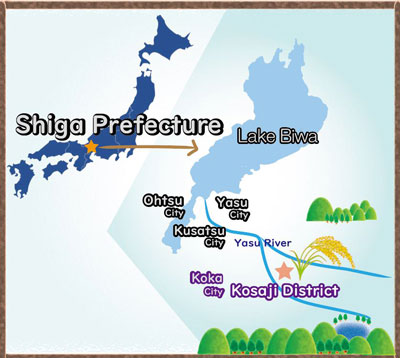

In Kosaji, winter flooding, in which irrigation water is maintained in the rice paddies during the winter, began in 2016. In the conventional farming methods, rice fields are kept dry during the winter. Winter flooding (or ‘fuyu-mizu-tambo’) is a traditional method of rice cultivation that has existed since the Edo period (1603-1868), but largely disappeared along with the modernisation of agriculture. In recent years, winter flooding has once again been attracting interests as an environmentally friendly farming method, as it can increase soil fertility and reduce the use of chemical fertilisers, and help conserve the wetland species.
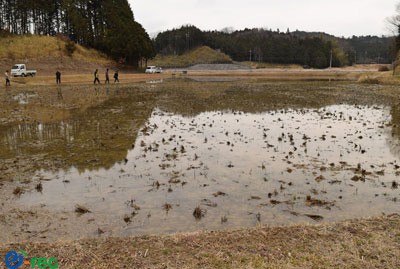
How can we support and facilitate winter flooding that were initiated by a small group of farmers? A young researcher spent a few months in Kosaji, lodging in a small house close to the rice paddies. From there, he talked and worked with the farmers and deepened understanding of local life and the people’s relationship with nature. He then found out that a local species can serve as an indicator for ‘richness of nature’ (biodiversity), allowing the farmers to see the outcomes of their efforts themselves.
The rice paddies of Kosaji are home to a variety of creatures. The Japanese red-legged frog is a particularly rare species, listed in the Red Data Book of several prefectures, including Kyoto Prefecture. Together with farmers, we checked the number of eggs of the Japanese red-legged frog and found that the number of eggs increased in the rice paddies in winter. At a ‘living creature observation’ event held with local children, it was confirmed that there are many living creatures, including not only red frogs, but also killifish and Japanese fire salamanders.
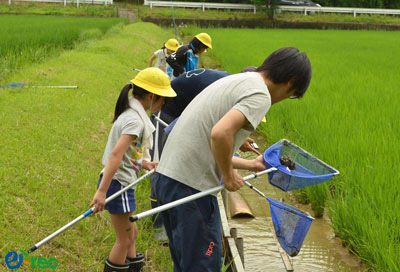
In addition, with the help and advice of farmers, soil samples from winter-flooded and conventionally-flooded paddy fields were collected and cultured in the laboratory. As a result, it was found that phosphorus run-off was reduced in winter-flooded paddy fields.
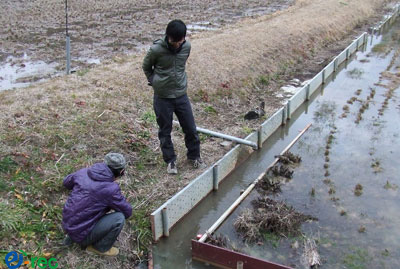
The project team also created opportunities for researchers and farmers to present their activities at symposia together and invite representatives from other regions in the Yasu River watershed to jointly hold seminars and other events, though which the exchanges with people from different regions and positions are encouraged.
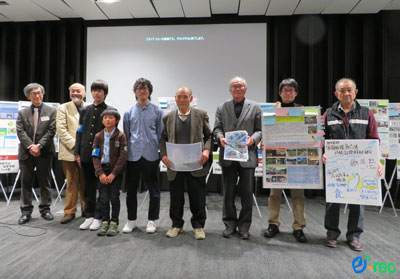
The realisation that winter flooding improves the natural environment and that fosters interaction among people from different regions and generations has encouraged the farmers to start or continue winter flooding, even though it requires more efforts and maintenance from the conventional practices. As a result, the area of winter flooding in Kosaji increased dramatically. Even now that the project has ended, many farmers continue to winter flood their paddies.
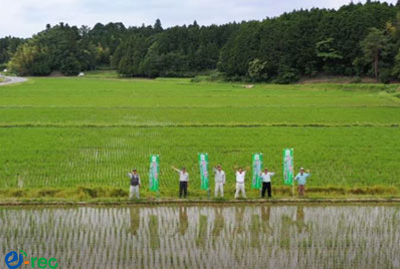
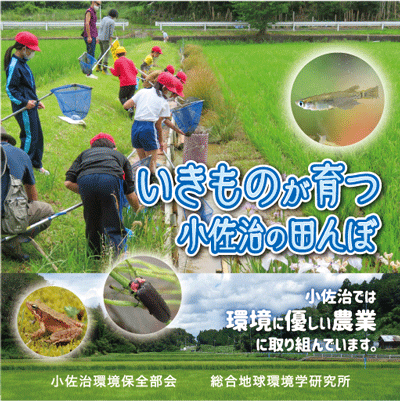
(Written by: Yuko Onishi)
The story focused on co-creation activities of researchers and the stakeholders to real-world problems. It is not a summary of the research project, but an original article based on interviews with the researchers and residents involved, as well as publications from the project. If you would like to know more about the research project and its outputs, please refer to the following references.
References:
脇田・谷内・奥田、2020、流域ガバナンス:地域の「しあわせ」と流域の「健全性」、京都大学学術出版会
淺野悟史・脇田健一・西前出・石田卓也・奥田 昇 2018年9月 『地域の環境ものさし』による生物多様性保全活動の推進. 農村計画学会誌 37(2):150-156.
Video:
Mother Lake Biwa 〜Wartershed Governance in Yasu River〜
Website:
Research Institute for Humanity and Nature.・E-rec Project Website




